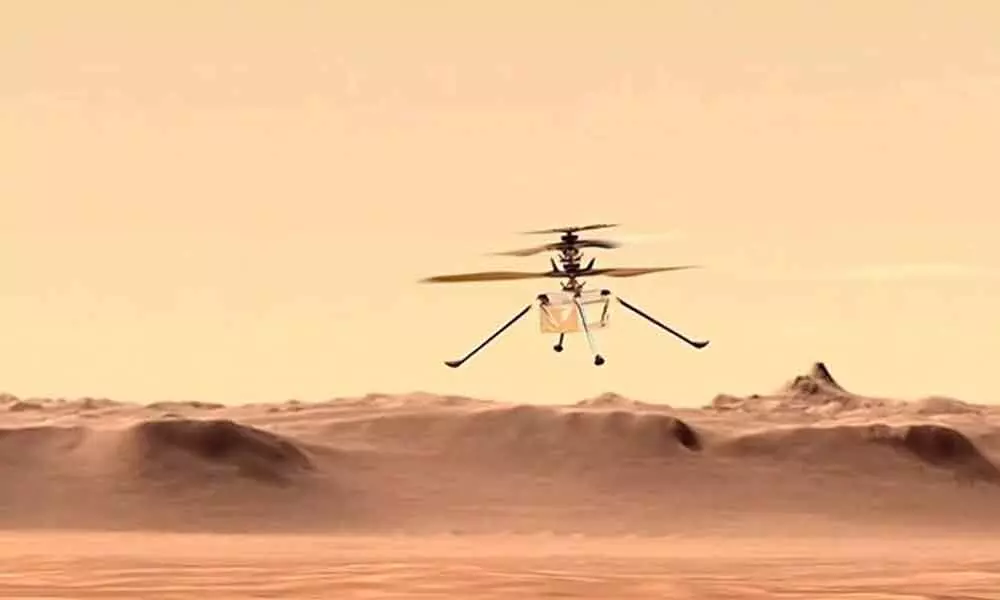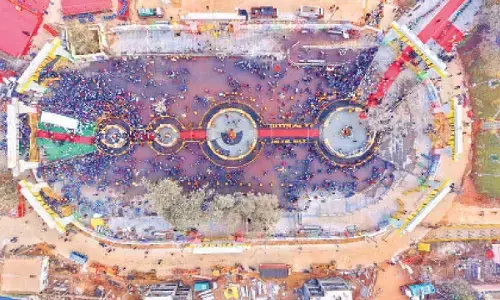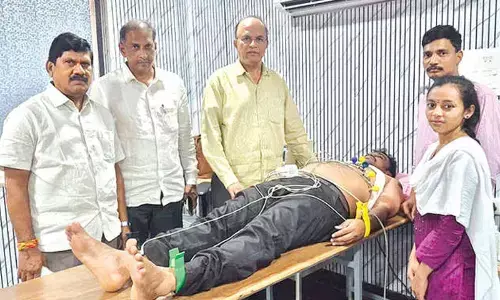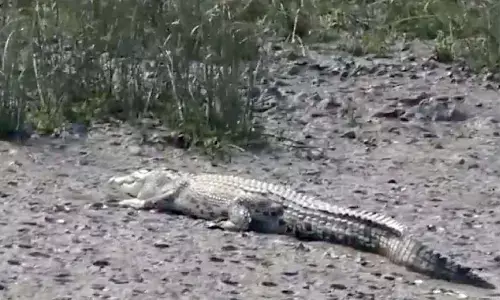NASA chopper makes historic flight on Mars

NASA chopper makes historic flight on Mars
The Ingenuity helicopter has successfully completed its historic flight on Mars and safely landed back on the surface, according to NASA.
New York: The Ingenuity helicopter has successfully completed its historic flight on Mars and safely landed back on the surface, according to NASA.
The first powered, controlled flight on another planet took place at 3:34 am. Unlike when the helicopter's fellow traveller, the Perseverance rover, landed on Mars on February 18, there was a bit of wait to know how the helicopter fared in its attempt. The helicopter team was in mission control at NASA's Jet Propulsion Laboratory in Pasadena, California, on Monday morning to receive and analyse the first data from Ingenuity's flight attempt. Live coverage began on NASA's site on Monday at 6:15 am, shortly before confirmation of the flight's success at 6:46 am. A postflight briefing is scheduled for 2 pm. The flight was originally scheduled for April 11, but plans shifted after a command-sequence issue was discovered when the helicopter went through a system of preflight checks with its software. The helicopter team received data on April 16 showing that the helicopter successfully completed its rapid spin test after employing a command sequence tweak. The chopper autonomously flew through the thin Martian atmosphere, with no help from its teams on Earth. "We can now say that human beings have flown a rotorcraft on another planet," said MiMi Aung, Ingenuity project manager at JPL. "We've been talking about our Wright Brothers moment on another planet for so long. And now, here it is."
Ingenuity, which is a technology demonstration, flew for about 40 seconds total on Monday. The 4-pound helicopter spun up its two 4-foot blades, rose up 10 feet (3 meters) in the air, hovered, took a photo, and touched back down on Mars.
Ingenuity could fly up to four more times over the coming weeks.
"Mars is hard not only when you land, but when you try to take off from it and fly around, too," Aung said. "It has significantly less gravity, but less than 1% the pressure of our atmosphere at its surface. Put those things together, and you have a vehicle that demands every input be right."
The Perseverance rover helps the helicopter and its mission team on Earth communicate with each other. It received the flight instructions from JPL and sent those plans on to the helicopter. Perseverance is parked at an overlook 215 feet (65 meters) away from the helicopter so it could safely watch the flight and capture images and videos.
During the helicopter's hover, it captured images 30 times per second to feed into the navigation computer. This made sure Ingenuity remained level and in the middle of its 33-by-33-feet (10-by-10-meter) airfield.
Ingenuity used a second higher-resolution camera pointing toward the horizon to capture images while the helicopter was aloft. Once the helicopter landed on Mars, it sent back data through the rover to Earth.
That first black-and-white image from the helicopter's navigation camera is key because "that will help us localize where the helicopter landed," said Tim Canham, Ingenuity operations lead at JPL.
"The primary purpose of this project is to get that detailed engineering data that we can see the performance of the vehicle, and then that data can be used by future projects to make even bigger and better helicopters," Canham said.
The airfield now bears a new name fitting for this historic event.
"Now, 117 years after the Wright brothers succeeded in making the first flight on our planet, NASA's Ingenuity helicopter has succeeded in performing this amazing feat on another world," said Thomas Zurbuchen, associate administrator for NASA's Science Mission Directorate, in a statement.
















